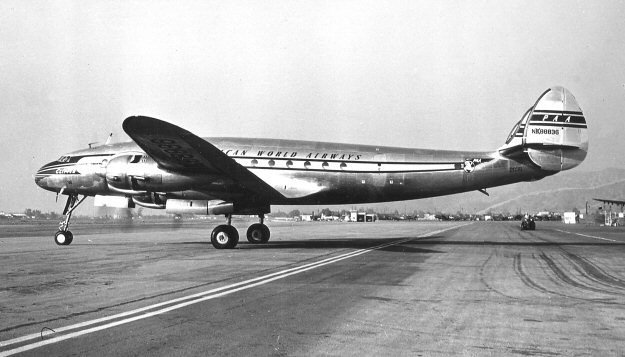
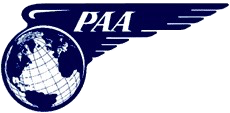 3 February 1946: Pan American World Airways inaugurated the commercial operation of its new Lockheed L-049-46-21 Constellation, Clipper Mayflower, NC88836, with scheduled flights from New York to Bermuda. The Constellation flew the southbound route in 2 hours, 22 minutes.
3 February 1946: Pan American World Airways inaugurated the commercial operation of its new Lockheed L-049-46-21 Constellation, Clipper Mayflower, NC88836, with scheduled flights from New York to Bermuda. The Constellation flew the southbound route in 2 hours, 22 minutes.
On the same day, at 4:17 p.m., Eastern Standard Time, another Pan Am Constellation, under the command of Captain Robert D. Fordyce, departed LaGuardia Airport, New York, for London, England, with 30 passengers and a ton of cargo. The Lockheed made refueling stops at Gander, Newfoundland, and Shannon, Ireland, before finally arriving at Hurn Airport, Bournemouth, (approximately 100 miles southwest of London) at 7:50 a.m., EST, (12:50 GMT), 4 February, 1946. The total elapsed time was 15 hours, 32 minutes, with 12 hours, 49 minutes of actual flight.
According to Logbook Magazine, NC88836, Lockheed serial number 2036, was delivered to Pan Am on 5 January 1946. While with the airline it also carried the name Clipper Yankee Ranger. 2036 was transferred to Cubana de Aviación (owned by Pan Am since 1932) in 1953, and re-registered CU-T-547. It served with several other airlines over the next 15 years, including El Al Israel Airlines, registered 4X-AKE. The Constellation was taken out of service in 1968 and placed in storage at Tel Aviv. It was scrapped later that year.
 The Lockheed Constellation first flew in 1942, and was produced for the U.S. Army Air Corps as the C-69. With the end of World War II, commercial airlines needed new airliners for the post-war boom. The Constellation had transoceanic range and a pressurized cabin for passenger comfort.
The Lockheed Constellation first flew in 1942, and was produced for the U.S. Army Air Corps as the C-69. With the end of World War II, commercial airlines needed new airliners for the post-war boom. The Constellation had transoceanic range and a pressurized cabin for passenger comfort.
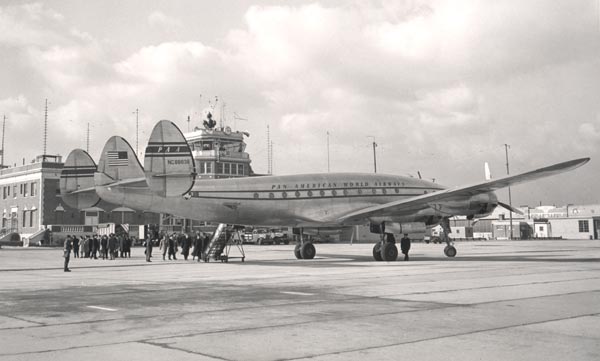
The Lockheed L-049 Constellation was operated by a flight crew of four and could carry up to 81 passengers. The airplane was 95 feet, 1 3⁄16 inches (28.986 meters) long with a wingspan of 123 feet, 0 inches (37.490 meters), and overall height of 23 feet, 7⅞ inches (7.210 meters). It had an empty weight of 49,392 pounds (22,403.8 kilograms) and maximum takeoff weight of 86,250 pounds (39,122.3 kilograms).
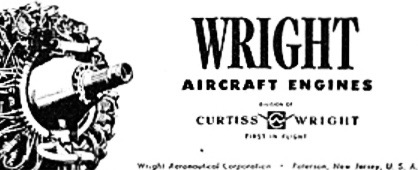 The L-049 was powered by four air-cooled, supercharged and fuel-injected, 3,347.662-cubic-inch-displacement (54.858 liter) Wright Aeronautical Division Cyclone 18 ¹ 745C18BA3 two-row 18-cylinder radial engines with a compression ratio of 6.5:1. The -BA3 was rated at 2,000 horsepower at 2,400 r.p.m., or 2,200 horsepower at 2,800 r.p.m., for takeoff, (five minute limit). The engines drove 15 foot, 2 inch (4.623 meter) diameter, three-bladed Hamilton Standard Hydromatic constant-speed propellers through a 0.4375:1 gear reduction. The 745C18BA3 was 6 feet, 4.13 inches (1.934 meters) long, 4 feet, 7.78 inches (1.417 meters) in diameter and weighed 2,842 pounds (1,289.11 kilograms).
The L-049 was powered by four air-cooled, supercharged and fuel-injected, 3,347.662-cubic-inch-displacement (54.858 liter) Wright Aeronautical Division Cyclone 18 ¹ 745C18BA3 two-row 18-cylinder radial engines with a compression ratio of 6.5:1. The -BA3 was rated at 2,000 horsepower at 2,400 r.p.m., or 2,200 horsepower at 2,800 r.p.m., for takeoff, (five minute limit). The engines drove 15 foot, 2 inch (4.623 meter) diameter, three-bladed Hamilton Standard Hydromatic constant-speed propellers through a 0.4375:1 gear reduction. The 745C18BA3 was 6 feet, 4.13 inches (1.934 meters) long, 4 feet, 7.78 inches (1.417 meters) in diameter and weighed 2,842 pounds (1,289.11 kilograms).
The L-049 had a cruise speed of 313 miles per hour (503.72 kilometers per hour) and a range of 3,995 miles (6,429.3 kilometers). Its service ceiling was 25,300 feet (7,711 meters).
22 C-69s and 856 Constellations of all types were built. Designed by the famous Kelly Johnson, the Lockheed Constellation was in production from 1943–1958 in both civilian airliner and military transport versions. It is the classic propeller-driven transcontinental and transoceanic airliner.
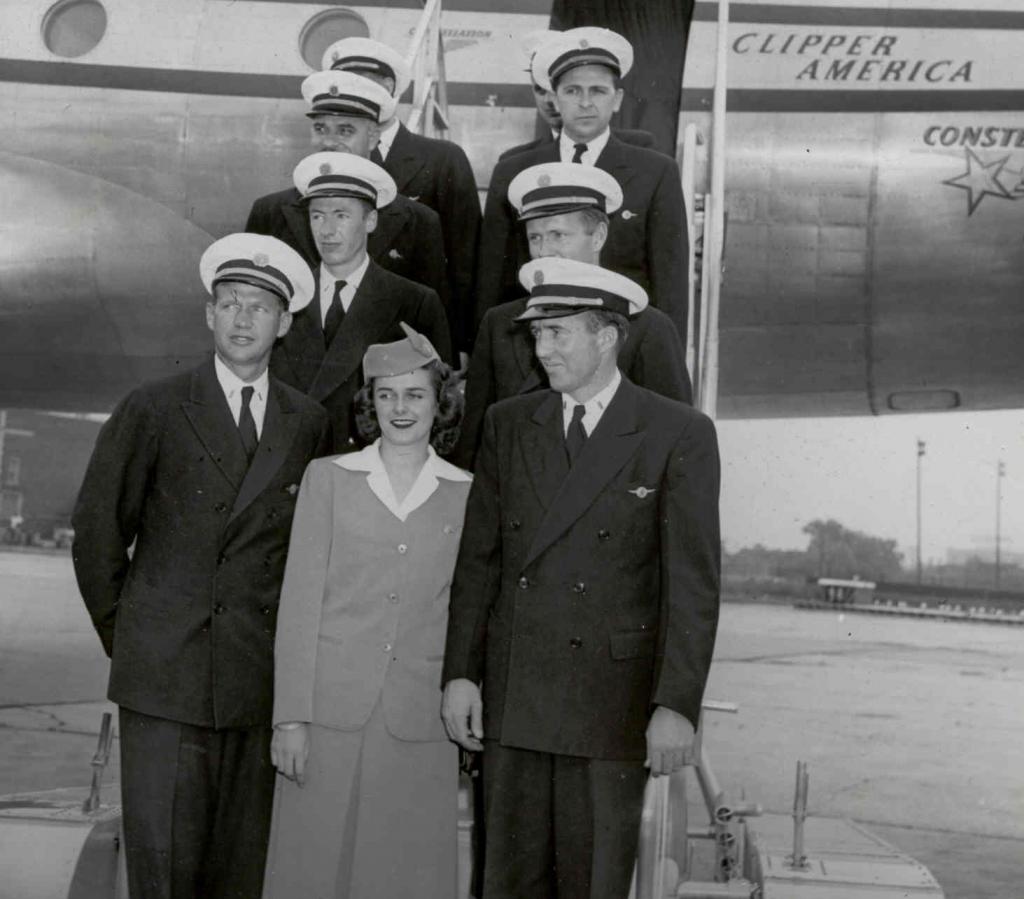
¹ The Cyclone 18 series was also known as the Duplex Cyclone.
© 2019, Bryan R. Swopes